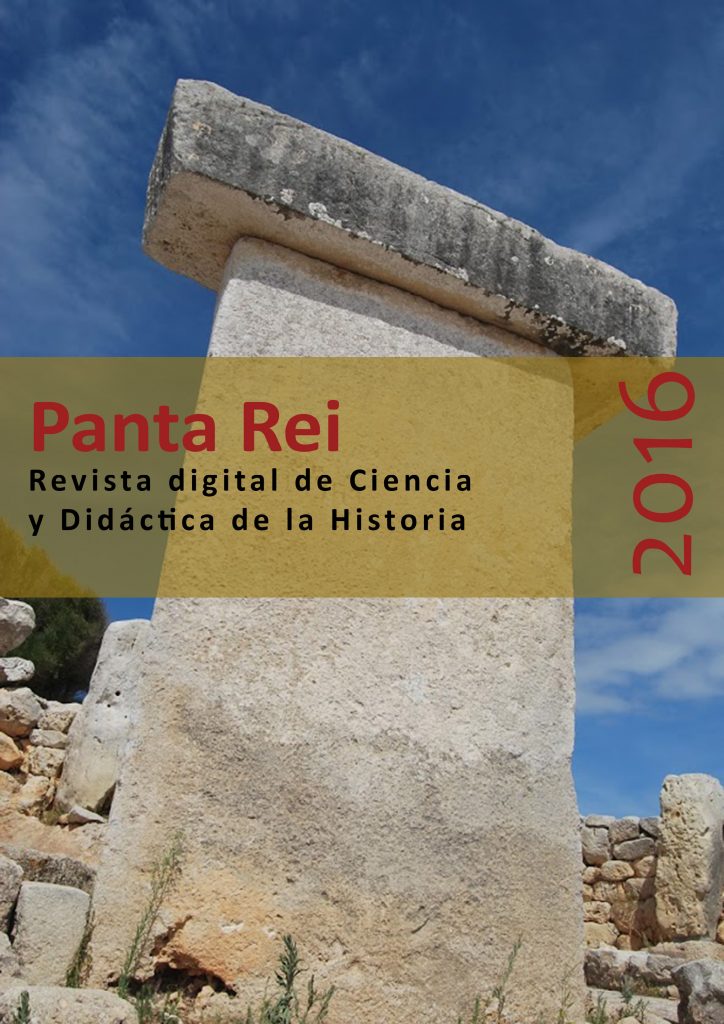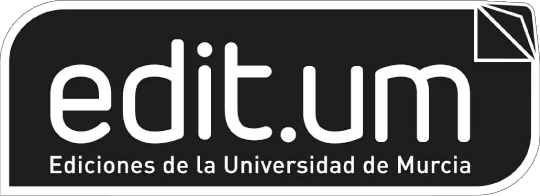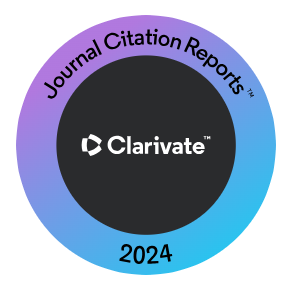¿Cómo los métodos digitales están cambiando la investigación del mundo clásico? El caso del EpiDoc
Resumen
Los Estudios Clásicos como disciplina siempre se han beneficiado del uso de la tecnología digital en la investigación, con proyectos que datan desde los años 70 e incluso de fechas anteriores. Este artículo examina la integración de los Estudios Clásicos y las nuevas tecnologías de la información y presenta un caso práctico en torno a EpiDoc, una lengua de marcado uso en epigrafía. Hay constancia de la influencia positiva de la introducción de EpiDoc: no solo cuenta con varios proyectos colaborativos en la actualidad sino que la naturaleza de su tecnología fomenta la investigación en abierto. Las inscripciones del proyecto de Aphrodisias son una muestra significativa del potencial de las publicaciones electrónicas basadas en este lenguaje. Aunque el efecto de EpiDoc en la propia investigación permanece todavía inconcluso, al contar con escasos ejemplos claros, hay una clara evidencia de las posibilidades de futuro que posee. La difusión de estas conclusiones a la amplia comunidad de humanidades digitales clásicas muestra una tendencia hacia la colaboración en publicaciones y proyectos recientes, así como una aceptación gradual de publicaciones electrónicas.
Descargas
-
Resumen349
-
PDF 154
Citas
Almas, B. & Beaulieu, M.-C. (2016). The Perseids Platform: Scholarship for all! In Bodard, G. & Romanello, M. (Eds.), Digital Classics Outside the Echo-Chamber: Teaching, Knowledge Exchange & Public Engagement (pp. 171–186). London: Ubiquity Press.
Babeu, A. (2011). ‘Rome Wasn’t Digitized in a Day’: Building a Cyberinfrastructure for Digital Classicists. Washington, DC: Council on Library and Information Resources. Retrieved from http://www.clir.org/pubs/reports/reports/pub150/pub150.pdf
Barker, E. (2015, February 2). Mapping Herodotus: Countercartography, Networks and Bottomless Maps. Presented at the Digital Classics, Ancient History Seminar, Spring Term 2015, Oxford. Retrieved from http://www.podcasts.ox.ac.uk/digital-classics-mapping-ancient-world- countercartography-networks-and-bottomless-maps
Baumann, R. (2013). The Son of Suda On-Line. In Dunn, S. & Mahony, S. (Eds.), The Digital Classicist 2013 (pp. 91–106). London: Institute of Classical Studies, School of Advanced Study, University of London.
Bevan, A. (2013). Travel and Interaction in the Greek and Roman World: A Review of Some Computational Modelling Approaches. In Dunn, S. & Mahony, S. (Eds.), The Digital Classicist 2013 (pp. 3–24). London: Institute of Classical Studies, School of Advanced Study, University of London.
Blackwell, C. & Crane, G. (2009). Conclusion: Cyberinfrastructure, the Scaife Digital Library and Classics in a Digital Age. Digital Humanities Quarterly, 3, no. 1. Retrieved from http://www. digitalhumanities.org/dhq/vol/3/1/000035/000035.html
Blanke, T., Hedges, M. & Rajbhandari, S. (2013). Towards a Virtual Data Centre for Classics. In Dunn, S. & Mahony, S. (Eds.), The Digital Classicist 2013 (pp. 81–90). London: Institute of Classical Studies, School of Advanced Study, University of London.
Bodard, G. (2010). EpiDoc: Epigraphic Documents in XML for Publication and Interchange. In Feraudi-Gruénais, F. (Ed.), Latin on Stone: Epigraphic Research and Electronic Archives (pp.101–18). Lanham: Lexington Books.
Bodard, G. (2008). The Inscriptions of Aphrodisias as Electronic Publication: A User’s Perspective and a Proposed Paradigm. Digital Medievalist, 4, 37 paragraphs. Retrieved from http://www. digitalmedievalist.org/journal/4/bodard/
Bodard, G. & Garcés, J. (2009). Open Source Critical Editions: A Rationale. In Deegan, M. & Sutherland, K. (Eds.), Text Editing, Print and the Digital World (pp. 84–98). Farnham: Ashgate. Bodard, G. & Mahony, S. (Eds.). (2010). Digital Research in the Study of Classical Antiquity. Farnham: Ashgate.
Bodard, G. & Mahony, S. (Eds.). (2008). ‘Though Much Is Taken, Much Abides’: Recovering antiquity through innovative digital methodologies (Digital Classicist/Digital Medievalist Special Issue). Digital Medievalist, 4, 194 paragraphs. Retrieved from http://www.digitalmedievalist.org/ journal/4/
Bodard, G. & Romanello, M. (Eds.) (2016), Digital Classics Outside the Echo-Chamber: Teaching, Knowledge Exchange & Public Engagement. London: Ubiquity Press. DOI: http://dx.doi. org/10.5334/bat.j. License: CC-BY 4.0. Retrieved from http://www.ubiquitypress.com/site/ books/detail/21/digital-classics-outside-the-echo-chamber.
Bodard, G. & Stoyanova, S. (2016). Epigraphers and Encoders: Strategies for Teaching and Learning Digital Epigraphy. In Bodard, G. & Romanello, M. (Eds.), Digital Classics Outside the Echo-Chamber: Teaching, Knowledge Exchange & Public Engagement (pp. 51–68). London: Ubiquity Press.
Brunner, T. F. (1993). Classics and the Computer: The History of a Relationship. In Solomon, J. (Ed.), Accessing Antiquity: The Computerization of Classical Studies (pp. 10–33). Tucson: University of Arizona Press.
Büchler, M., Geßner, A., Berti, M. & Eckart, T. (2013) Measuring the Influence of a Work by Text Re-Use. In Dunn, S. & Mahony, S. (Eds.), The Digital Classicist 2013 (pp. 63–79). London: Institute of Classical Studies, School of Advanced Study, University of London.
Büchler, M., Kruse, S. & Eckart, T. (2012). Bringing Modern Spell Checking Approaches to Ancient Texts - Automated Suggestions for Incomplete Words. In Proceedings of Digital Humanities 2012. Hamburg.
Cayless, H. (2003). Developing a Toolkit for Digital Epigraphy. In Rochester, E. & Kretzschmar, Jr., W. A. (Eds.), ALLC/ACH 2003 Conference Abstracts (pp. 155–6). Athens, GA.: The University of Georgia. Retrieved from http://citeseerx.ist.psu.edu/viewdoc/download?doi=10.1.1.91.5363 &rep=rep1&type=pdf
Cayless, H. (2015, July 17). Integrating Digital Epigraphies (IDEs). Presented at the Digital Classicist London & Institute of Classical Studies seminar 2015. Retrieved from http://www. digitalclassicist.org/wip/wip2015-07hc.html
Cayless, H., Roueché, C., Elliott, T. & Bodard, G. (2009). Epigraphy in 2017. Digital Humanities Quarterly, 3, no. 1. Retrieved from http://www.digitalhumanities.org/dhq/vol/3/1/000030/000030. html
Clarke, A., Fulford, M., Rains, M. & Shaffrey, R. (2001). The Victorian Excavations of 1893. Silchester Roman Town - The Insula IX Town Life Project. Retrieved from https://www.reading.ac.uk/ silchester/i3/victorians/vic_home.php
Crane, G. (2004). Classics and the Computer: An End of the History. In Schreibman, S., Siemens, R. & Unsworth, J. (Eds.), A Companion to Digital Humanities. Malden, MA.: Blackwell Publishing. Retrieved from http://www.digitalhumanities.org/companion
Crane, G. & Terras, M. (Eds.). (2009). Changing the Center of Gravity: Transforming Classical Studies Through Cyberinfrastructure. Digital Humanities Quarterly, 3, no. 1. Retrieved from http://www.digitalhumanities.org/dhq/vol/3/1/index.html
Crane, G., Seales, B & Terras, M. (2009). Cyberinfrastructure for Classical Philology. Digital Humanities Quarterly, 3, no. 1. Retrieved from http://www.digitalhumanities.org/dhq/ vol/3/1/000023/000023.html
Creative Commons – Attribution 3.0 Unported – CC BY 3.0. (n.d.). Retrieved from https:// creativecommons.org/licenses/by/3.0
Dee, S., Foradi, M. & Šarić, F. (2016). Learning By Doing: Learning to Implement the TEI Guidelines Through Digital Classics Publication. In Bodard, G. & Romanello, M. (Eds.), Digital Classics Outside the Echo-Chamber: Teaching, Knowledge Exchange & Public Engagement (pp. 15– 32). London: Ubiquity Press.
Dunn, S. & Mahony, S. (Eds.). (2013). The Digital Classicist 2013. London: Institute of Classical Studies, School of Advanced Study, University of London.
Edmunds, L. (Fall, 1995–Winter, 1996). Computers and the Classics: The Third Phase. Arion: A Journal of Humanities and the Classics, 3, no. 2/3, 317–50. Retrieved from http://www.jstor. org/stable/20163591
Elliott, T. (2012). Aphrodeisias: a Pleiades Name resource. Retrieved from http://pleiades.stoa.org/ places/638753/aphrodeisias
Elliott, T., Bodard, G., Mylonas, E., Stoyonava, S., Tupman, C., Vanderbilt, S., et al. (2007-2016). EpiDoc Guidelines: Ancient Documents in TEI XML; Appendix: Glossary (Version 8). Retrieved from http://www.stoa.org/epidoc/gl/latest/app-glossary.html
Felle, A. E. & Rocco, A. (Eds.). (2016). Off the Beaten Track: Epigraphy at the Borders: Proceedings of the VI EAGLE International Event. Oxford: Archaeopress Publishing Ltd. Retrieved from www.archaeopress.com/ArchaeopressShop/Public/download.asp?id={E7B2AAC6-9986- 4C41-9842-6AA93BE7ACD9}
Feraudi-Gruénais, F. (Ed.). (2010). Latin on Stone: Epigraphic Research and Electronic Archives. Lanham: Lexington Books.
Foka, A. (2014). Reflecting on Our (first Ever) Digital Classicist Wiki Sprint. The Stoa Consortium, July 16, 2014. Retrieved from http://www.stoa.org/archives/1977
Franzini, G., Terras, M. & Mahony, S. (2016). A Catalogue of Digital Editions. In Pierazzo, E. & Driscoll, M. J. (Eds.), Digital Scholarly Editing: Theories and Practices (pp. 161–182). Cambridge: Open Book Publishers. Retrieved from http://www.openbookpublishers.com/product/483/digital- scholarly-editing--theories-and-practices
Fulford, M. G., O’Riordan, E. J., Clarke, A. & Rains, M. (2010). Silchester Roman Town: Developing Virtual Research Practice 1997-2008. In Bodard, G. & Mahony, S. (Eds.), Digital Research in the Study of Classical Antiquity (pp. 15–34). Farnham: Ashgate.
Gaffney, V., Murgatroyd, P., Craenen, B. & Theodoropoulos, G. (2013). ‘Only Individuals’: Moving the Byzantine Army to Manzikert. In Dunn, S. & Mahony, S. (Eds.), The Digital Classicist 2013 (pp. 25–44). London: Institute of Classical Studies, School of Advanced Study, University of London.
Gruber, E., Bransbourg, G., Heath, S. & Meadows, A. (2013). Linking Roman coins: Current work at the American Numismatic Society. In Earl, G., Sly, T., Chrysanthi, A., Murrieta-Flores, P., Papadopouos, C., Romanowska, I. & Wheatley, D. (Eds.), Archaeology in the Digital Era: Papers from the 40th Annual Conference of Computer Applications and Quantitative Methods in Archaeology (CAA), Southampton, 26-29 March 2012 (pp. 249–58). Amsterdam: Amsterdam University Press.
Hardwick, L. (2000). Electrifying the Canon: The Impact of Computing on Classical Studies. Computers and the Humanities, 34, 279–95. Retrieved from http://www.jstor.org/stable/30204820
Heath, S. (2010). Diversity and Reuse of Digital Resources for Ancient Mediterranean Material Culture. In Bodard, G. & Mahony, S. (Eds.), Digital Research in the Study of Classical Antiquity (pp. 35–52). Farnham: Ashgate.
Isaksen, L., Simon, R., Barker, E. & de Soto Cañamares, P. (2014). Pelagios and the emerging graph of ancient world data. In WebSci ‘14: Proceedings of the 2014 ACM conference on Web science, (pp. 197–201). New York: ACM. Retrieved from http://oro.open.ac.uk/43658
Löser, L. (2014). The March of IDEs - How Integrating Digital Epigraphies Could Facilitate Scholarly Use of Epigraphic Material. Dissertation in Ancient History, University of St Andrews. Retrieved from http://www.academia.edu/10674038/The_March_of_IDEs_-_How_Integrating_Digital_ Epigraphies_could_facilitate_scholarly_use_of_epigraphic_material
Matthews, E. & Rahtz, S. (2013). The Lexicon of Greek Personal Names and Classical Web Services. In Dunn, S. & Mahony, S. (Eds.), The Digital Classicist 2013 (pp. 107–24). London: Institute of Classical Studies, School of Advanced Study, University of London.
Monella, P. (2008). Towards a Digital Model to Edit the Different Paratextuality Levels within a Textual Tradition. Digital Medievalist, 4, 58 paragraphs. Retrieved from http://www.digitalmedievalist. org/journal/4/monella
Murgatroyd, P., Craenen, B., Theodoropoulos, G., Gaffney, V. & Haldon, J. (2011). Modelling Medieval Military Logistics: An Agent-Based Simulation of a Byzantine Army on the March. Computational and Mathematical Organization Theory, 18, no. 4, pp. 488–506.
Perseus Collections/Texts. (n.d.). Retrieved from http://www.perseus.tufts.edu/hopper/collections
Orlandi, S., Santucci, R., Casarosa, V. & Liuzzo, P. M. (Eds.). (2014). Information Technologies for Epigraphy and Cultural Heritage: Proceedings of the First EAGLE International Conference. Rome: Sapienza Università Editrice. Retrieved from http://www.eagle-network.eu/wp-content/ uploads/2015/01/Paris-Conference-Proceedings.pdf
Pierazzo, E. & Driscoll, M. J. (Eds.) (2016) Scholarly digital editions: Theory, practice and future perspectives. Cambridge: Open Book Publishers.
Reynolds, J., Roueché, C. & Bodard, G. Inscriptions of Aphrodisias (2007). Retrieved from http:// insaph.kcl.ac.uk/iaph2007
Roueché, C. (2004). Aphrodisias in Late Antiquity: The Late Roman and Byzantine Inscriptions (revised second edition). Retrieved from http://insaph.kcl.ac.uk/ala2004
Roueché, C. (1989). Aphrodisias in Late Antiquity: The Late Roman and Byzantine Inscriptions Including Texts from the Excavations at Aphrodisias Conducted by Kenan T. Erim. London: Society for the Promotion of Roman Studies.
Ruhleder, K. (1995). Reconstructing Artifacts, Reconstructing Work: From Textual Edition to On-Line Databank. Science, Technology, & Human Values, 20, 39–64. Retrieved from http://www.jstor. org/stable/689880
Smith, N. (2010). Digital Infrastructure and the Homer Multitext Project. In Bodard, G. & Mahony, S. (Eds.), Digital Research in the Study of Classical Antiquity (pp. 121–38). Farnham: Ashgate.
Talbert, R. J. A. (2000). Barrington Atlas of the Greek and Roman World. Princeton, N.J.: Princeton University Press.
Terras, M. (2010). The Digital Classicist: Disciplinary Focus and Interdisciplinary Vision. In Bodard, G. & Mahony, S. (Eds.), Digital Research in the Study of Classical Antiquity (pp. 171–89). Farnham: Ashgate.
TLG – About. (n.d.). Retrieved from http://stephanus.tlg.uci.edu/tlg.php
Toufexis, N. (2010). One Era’s Nonsense, Another’s Norm: Diachronic Study of Greek and the
Computer. In Bodard, G. & Mahony, S. (Eds.), Digital Research in the Study of Classical Antiquity (pp. 105–20). Farnham: Ashgate.
Tupman, C. (2010). Contextual Epigraphy and XML: Inscribed Funerary Monuments. In Bodard, G. & Mahony, S. (Eds.), Digital Research in the Study of Classical Antiquity (pp. 73–86). Farnham: Ashgate.
Unsworth, J. (2000). Scholarly Primitives: What Methods Do Humanities Researchers Have in Common, and How Might Our Tools Reflect This? Retrieved from http://people.brandeis. edu/~unsworth/Kings.5-00/primitives.html
Derechos de autor 2020 Katherine Steiner, Simon Mahony

Esta obra está bajo una licencia internacional Creative Commons Atribución-CompartirIgual 4.0.
Todos los contenidos publicados en nuestra revista están sujetos a una licencia Atribución 4.0 Internacional (CC BY-SA 4.0) de Creative Commons. Usted es libre de compartir (copiar y redistribuir el material en cualquier medio o formato) y adaptar (remezclar, transformar y crear a partir del material para cualquier finalidad, incluso comercial), bajo los siguientes términos:
Reconocimiento: Debe reconocer adecuadamente la autoría, proporcionar un enlace a la licencia e indicar si se han realizado cambios. Puede hacerlo de cualquier manera razonable, pero no de una manera que sugiera que tiene el apoyo del licenciador o lo recibe por el uso que hace.
CompartirIgual: Si remezcla, transforma o crea a partir del material, deberá difundir sus contribuciones bajo la misma licencia que el original.
El texto completo de la licencia se puede consultar en: Licencia Creative Commons













